Who doesn’t love the taste of a sweet, juicy mango on a warm day? This tropical fruit is beloved worldwide for its rich flavor, sunny color, and versatility in everything from smoothies to salsas. While mango trees naturally thrive in hot, humid climates, with a little creativity and care, you can successfully grow them in a greenhouse — even in regions where outdoor conditions aren’t ideal.
If you’ve ever dreamed of harvesting your own homegrown mangoes, this guide will walk you through the entire process of growing mangoes in a greenhouse, from selecting the right variety to planting, caring, and enjoying your harvest.
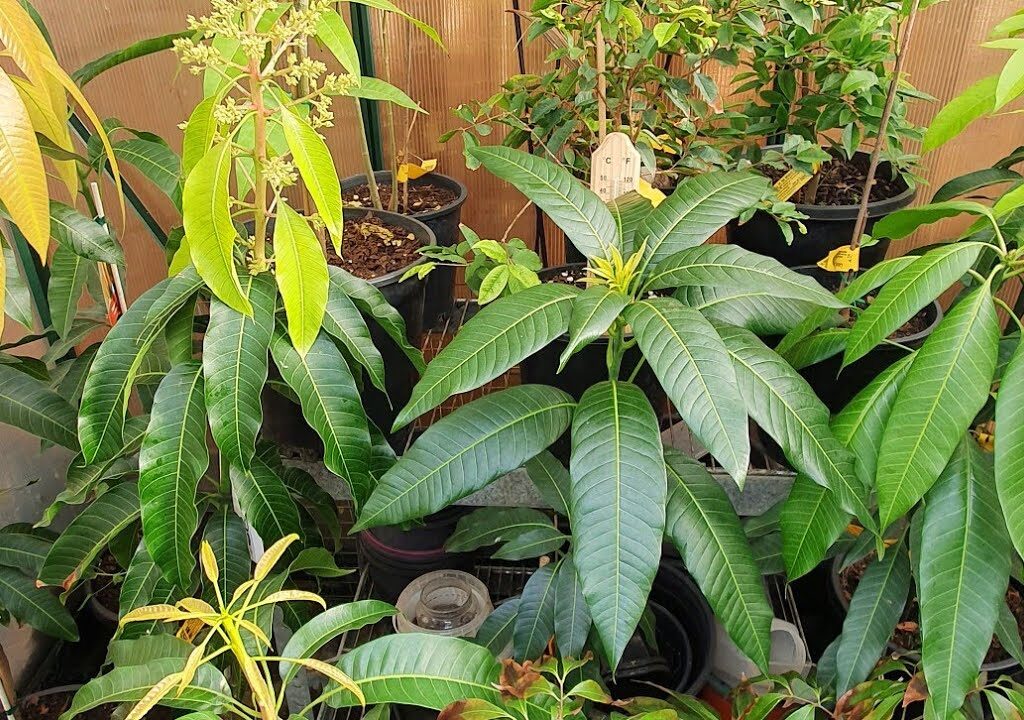
Why Grow Mangoes in a Greenhouse?
Mangoes (Mangifera indica) are native to South Asia but have found homes in tropical and subtropical regions around the world. They require consistently warm temperatures, plenty of sunshine, and protection from frost — which makes greenhouses a perfect environment for them in cooler or variable climates.
Benefits of growing mangoes in a greenhouse:
- Extend the growing season
- Protect from frost, wind, and pests
- Control humidity and temperature for ideal conditions
- Increase fruit production and quality
- Grow tropical fruits in non-tropical regions
Best Mango Varieties for Greenhouse Growing
Not all mango trees are suited for greenhouse cultivation. Large, traditional varieties can quickly outgrow confined spaces. The key is to choose dwarf or semi-dwarf cultivars that thrive in pots and controlled environments.
Recommended varieties:
- ‘Nam Doc Mai’
- Compact growth habit
- Sweet, fiberless fruit
- Ideal for pots and greenhouses
- ‘Carrie’
- Dwarf variety with rich, aromatic fruit
- Naturally disease-resistant
- Stays manageable in size
- ‘Pickering’
- Perfect for container growing
- Early fruiting and heavy producer
- ‘Cogshall’
- Small tree with full-sized fruit
- Beautiful ornamental foliage
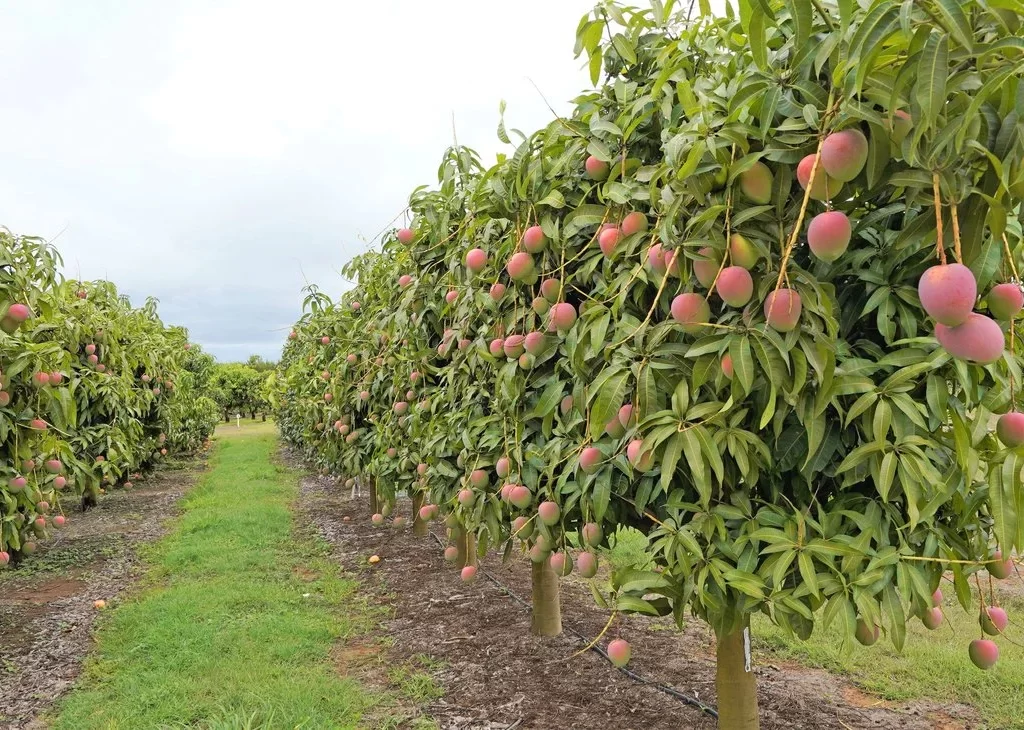
How to Plant Mangoes in a Greenhouse
1. Select a Suitable Pot
For greenhouse mangoes, start with a large, sturdy pot (at least 15-25 gallons) with ample drainage holes. As mangoes grow deep root systems, using a tall container allows roots to expand properly.
Ideal pot materials: Terracotta, heavy-duty plastic, or fabric grow bags.
2. Use the Right Soil Mix
Mangoes prefer well-draining, slightly acidic to neutral soil (pH 5.5-7.5).
Best soil blend:
- 60% loamy garden soil
- 30% coarse sand or perlite for drainage
- 10% organic compost or aged manure
Ensure good aeration to prevent root rot in the greenhouse’s humid conditions.
3. Planting Process
- Fill the pot halfway with soil mix.
- Gently remove the mango sapling from its nursery container.
- Place it in the center of the pot, keeping the graft line (if grafted) above soil level.
- Backfill and firm the soil gently around the base.
- Water thoroughly after planting.
Greenhouse Temperature and Light Requirements
Mangoes are heat lovers and require consistent warmth to thrive and produce fruit.
Ideal greenhouse conditions:
- Daytime temperature: 75°F to 85°F (24°C to 29°C)
- Nighttime temperature: Not below 55°F (13°C)
- Humidity: 50-70%
- Light: At least 8-10 hours of direct sunlight or supplemental grow lights.
Tip: Use a greenhouse thermometer and hygrometer to regularly monitor temperature and humidity.
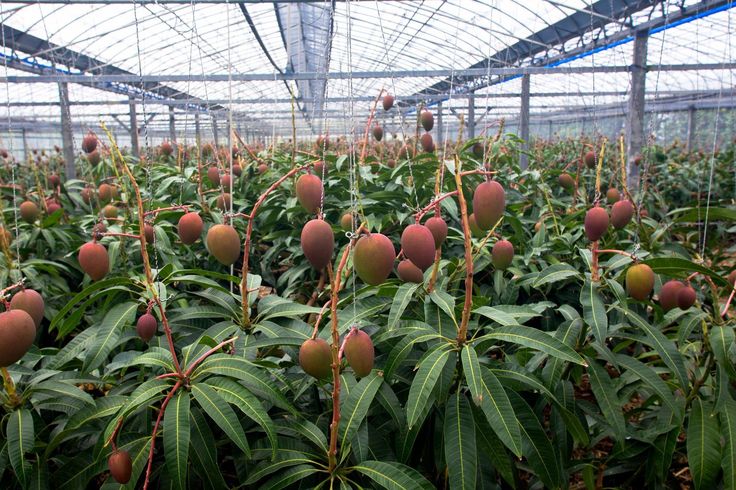
Watering and Feeding Mango Trees
Watering
Mango trees prefer moderate but regular watering, especially during active growth and fruiting.
- Keep soil evenly moist but never soggy.
- Allow the top 1-2 inches of soil to dry out between waterings.
- Reduce watering in winter when the tree enters semi-dormancy.
Feeding
Feed mango trees with a balanced, slow-release fertilizer (10-10-10) or a specialized citrus/tropical plant fertilizer.
Fertilizing schedule:
- Every 6-8 weeks during spring and summer
- Suspend or reduce feeding in fall and winter
Apply organic compost or liquid seaweed extract for extra micronutrients.
Pruning and Training in a Greenhouse
Greenhouse-grown mango trees need regular pruning to keep their size manageable and promote productive growth.
When to prune:
- After harvesting
- Before the onset of new growth in early spring
How to prune:
- Remove weak, dead, or crossing branches.
- Cut back long shoots to maintain a compact, bushy shape.
- Thin inner branches to improve airflow and light penetration.
For limited greenhouse spaces, consider training mango trees as espaliers or against trellises.
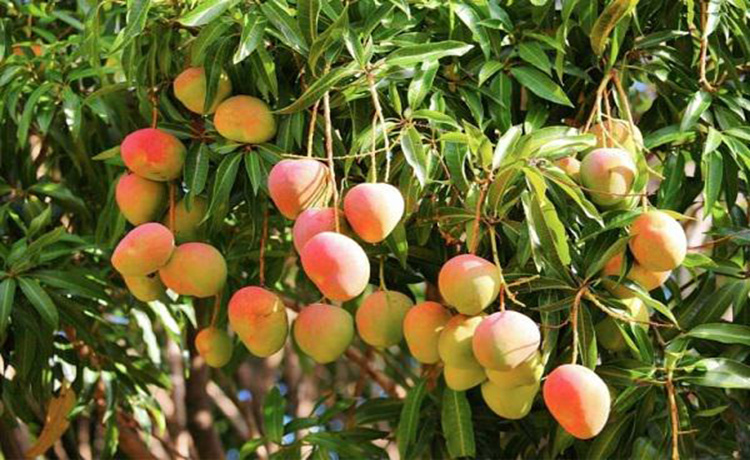
Pollination and Fruit Development
Most mango varieties are self-fertile but benefit from insect activity for improved fruit set. In greenhouses, natural pollination might be limited, so manual pollination can help.
Manual pollination tips:
- Use a soft brush or cotton swab to transfer pollen between flowers.
- Do this during the morning hours when flowers are most receptive.
- Repeat daily during peak flowering.
Fruit setting typically occurs within a month of flowering.
Common Pests and Problems
Even in controlled greenhouse conditions, mango trees can face a few challenges.
Watch out for:
- Spider mites: Fine webbing and leaf stippling.
- Mealybugs: White, cottony masses on stems and leaves.
- Aphids: Sticky honeydew and distorted leaves.
- Root rot: From overwatering or poor drainage.
Solutions:
- Regularly inspect plants.
- Spray with neem oil or insecticidal soap.
- Maintain airflow and clean greenhouse surfaces.
- Use sticky traps for flying insects.
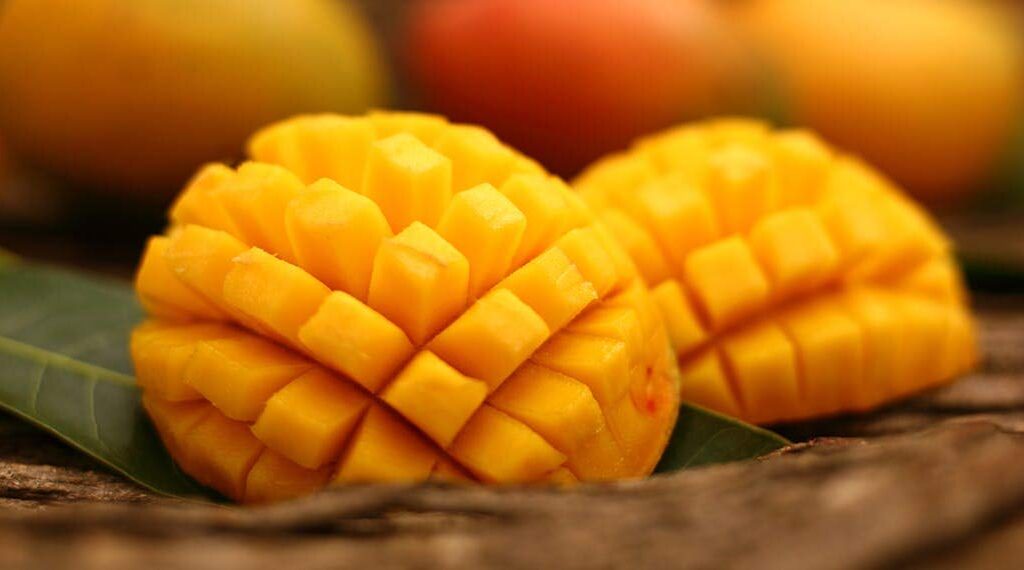
Harvesting Mangoes in a Greenhouse
Depending on the variety, mangoes take 100-150 days from flowering to ripening. Fruits are typically ready when:
- The skin turns color (green to yellow, orange, or red).
- The fruit emits a sweet aroma.
- It yields slightly to gentle pressure.
To harvest:
- Use clean, sharp pruning shears.
- Leave a small section of stem attached to the fruit.
- Ripen mangoes at room temperature for a few days if picked slightly underripe.
Winter Care for Greenhouse Mango Trees
In cooler months, greenhouse temperatures can drop, so it’s crucial to maintain warmth for your tropical plants.
Winter care tips:
- Use heaters or heat mats if temperatures fall below 55°F.
- Reduce watering to prevent root rot during dormancy.
- Avoid fertilizing until active growth resumes in spring.
- Move pots away from cold greenhouse walls or drafty areas.
Final Thoughts
Growing mangoes in a greenhouse allows gardeners in cooler climates to enjoy the thrill of cultivating this exotic, flavorful fruit. With the right variety selection, consistent warmth, ample light, and a bit of care, you can successfully nurture lush, fruit-laden mango trees right in your backyard greenhouse.
Whether you’re craving homegrown mango smoothies, jams, or fresh slices on a summer day, this rewarding gardening adventure is worth every effort. So, set up your greenhouse, choose your favorite dwarf mango variety, and start growing your own taste of the tropics today!

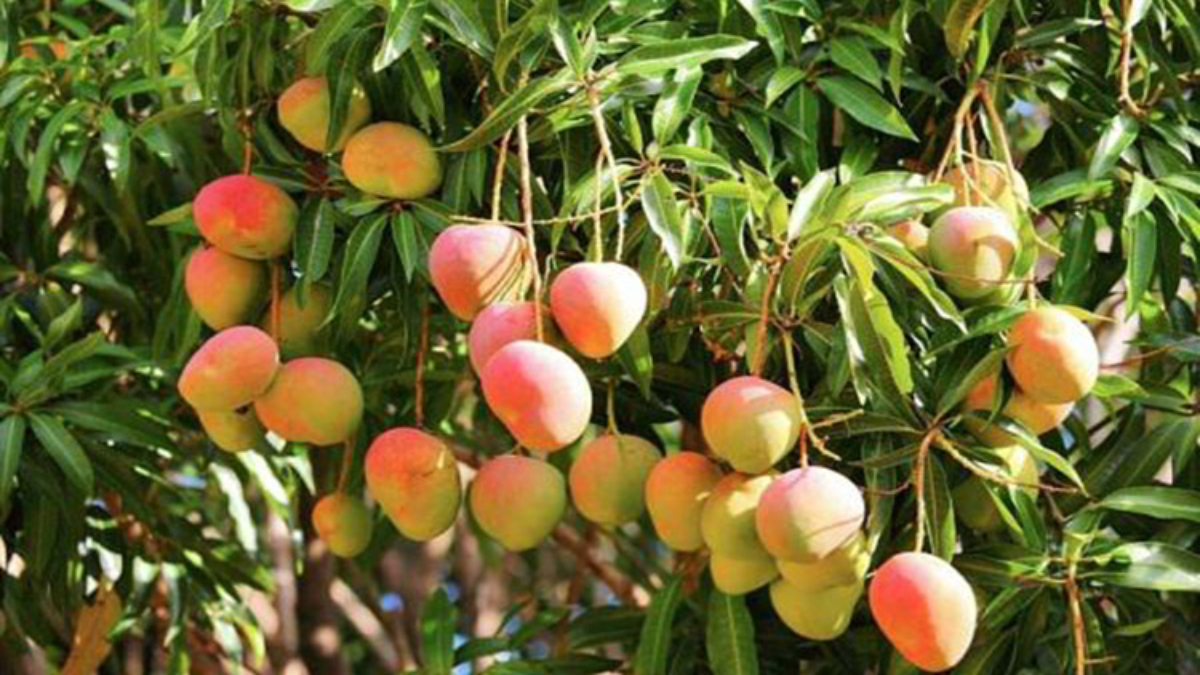




Leave A Comment